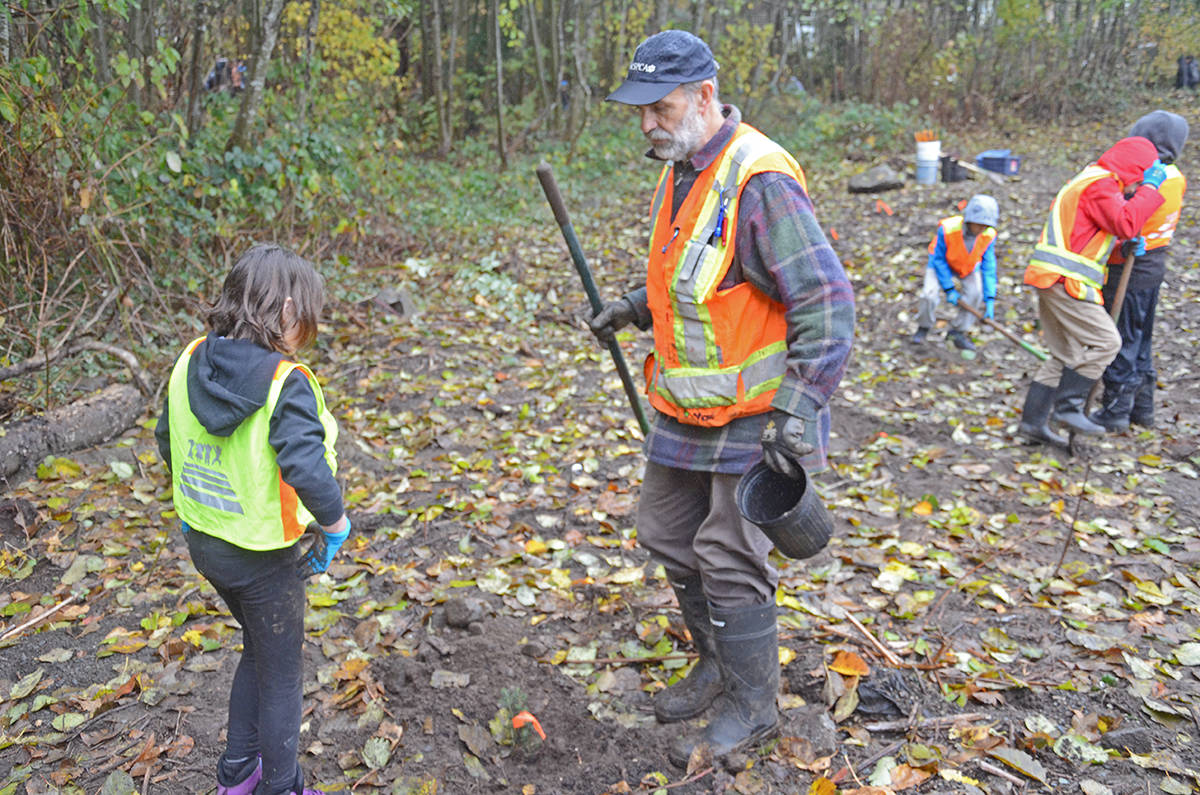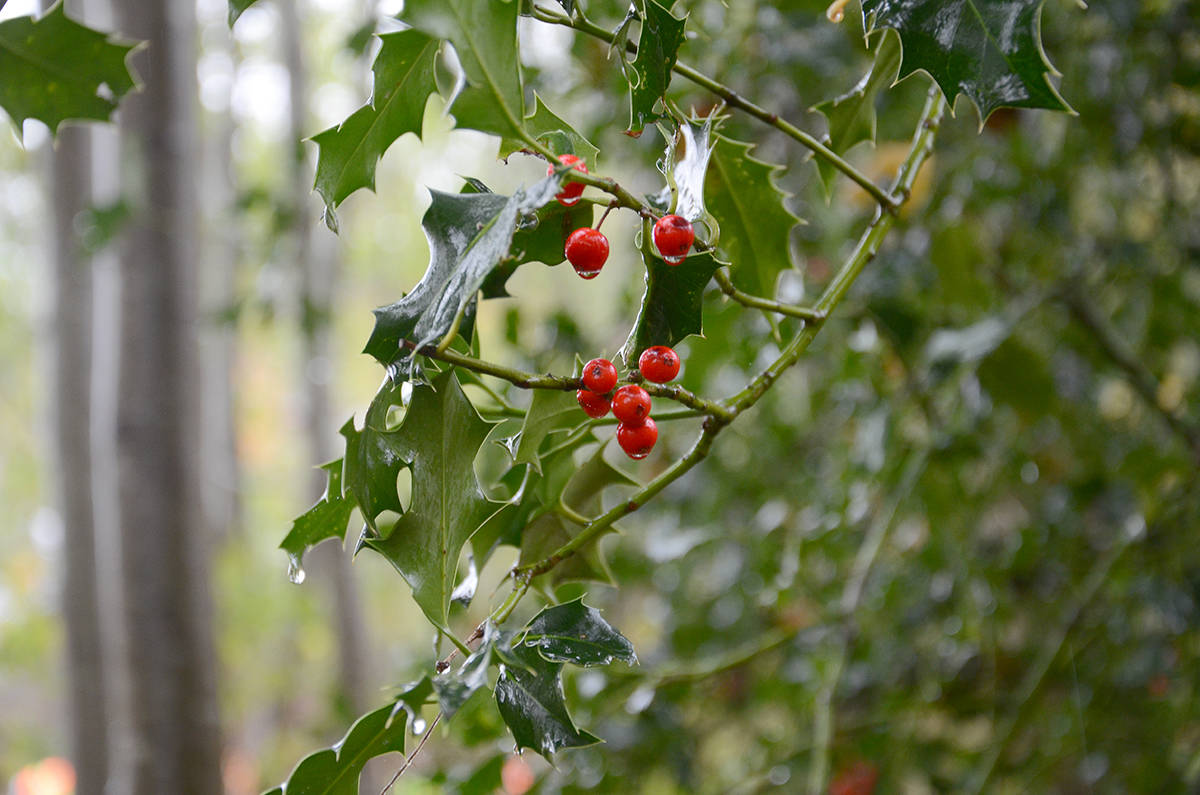UPDATED: With video
For students at Georgia Park Elementary, a replanting project near the school was a chance to learn outdoors and do some good.
For Greenways Land Trust, it was a chance to restore a forest at the site.
The local ecological group has been working with the school on a site adjacent to the school grounds that had become overrun with invasive plant species and on Wednesday afternoon, they were on site with a couple of Grade 4-5 classes to plant some coniferous trees in an area that had been cleared of invasive plants.
“Several school classes throughout town have been involved in this project,” said Lynnette Hornung, Greenways’ community engagement coordinator.
They will also be planting some deciduous tress, with the idea being that these trees will shade out the invasive plants like blackberry from taking over the area.
“It is an exciting project for us because the initial interest and first steps to make it happen came from a teacher at Georgia Park Elementary, and with two schools very close by this provides an opportunity for students to really develop a relationship with, and sense of responsibility for their local environment,” she said via email before the event.
The project is also a partnership with the City of Campbell River, which owns the land.
Georgia Park teacher Lisa Walls came up with the idea to restore the site last fall. As well as ecological benefits, she wanted to provide a way for students to appreciate the outdoors as part of their education.
“I think it’s really important for kids to get outside … reconnect with nature,” she says.
Some areas of the site had, in fact, seen dumping of yard waste, which has been a likely contributor to the influx of invasive plants. The area has become overrun with a number of invasive species such as lanium, blackberry and holly.
“Most of these things we have because people like them, but they don’t belong in our native environment,” says Greenways co-founder and vice-president Chuck DeSorcy.
Often, people will get some of these species, such as holly, as ornamentals but they discard them and they end up taking over a natural ecosystem.
“What we found with our sites, especially the sites that are really open, is the blackberries get really established,” says DeSorcy. “The best way to deal with that is to dig them if you can.”
Greenways was able to bring in a machine to dig out large bunches of the invasive plant.
“We’re lucky now because we have the funds to be able to do that, which most environmental outfits don’t have,” he said.
The project is funded by the federal government through the EcoAction Community Funding Program.
The hope is to implement the project over the course of the school year, which include removing invasive plant species, re-planting native vegetation, installing habitat features for local wildlife such as bird boxes and houses for Mason bees and developing two small “learning gardens.” These will showcase biodiversity and provide outdoor learning space for students to learn outside the classroom setting.

